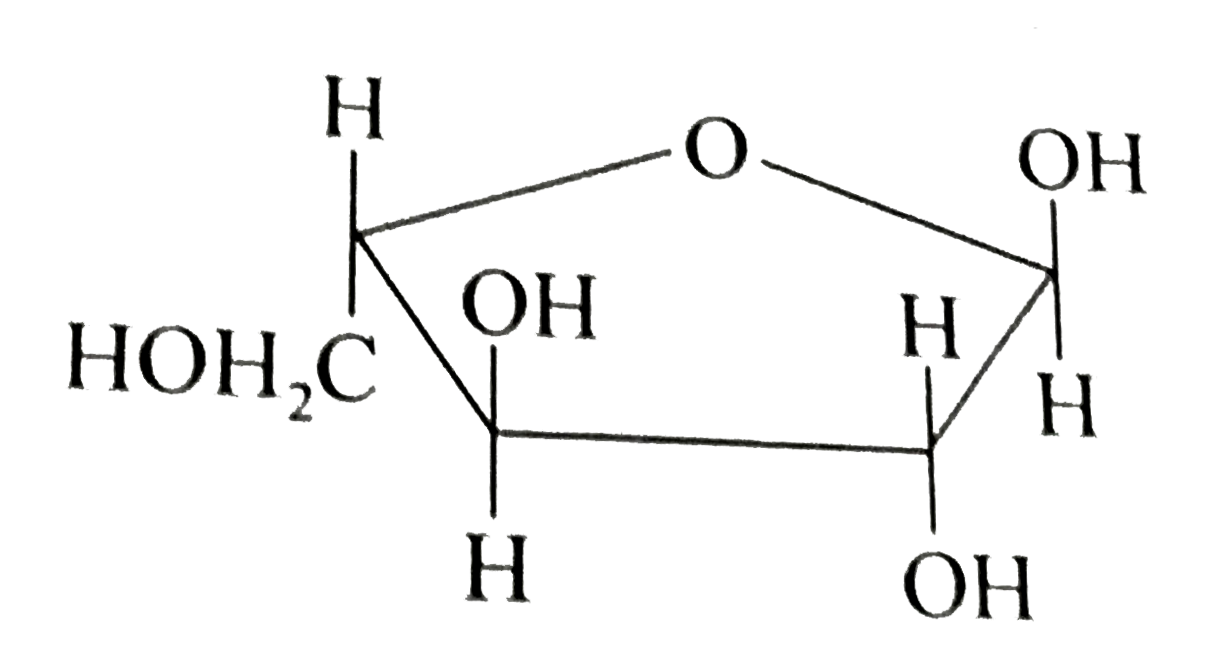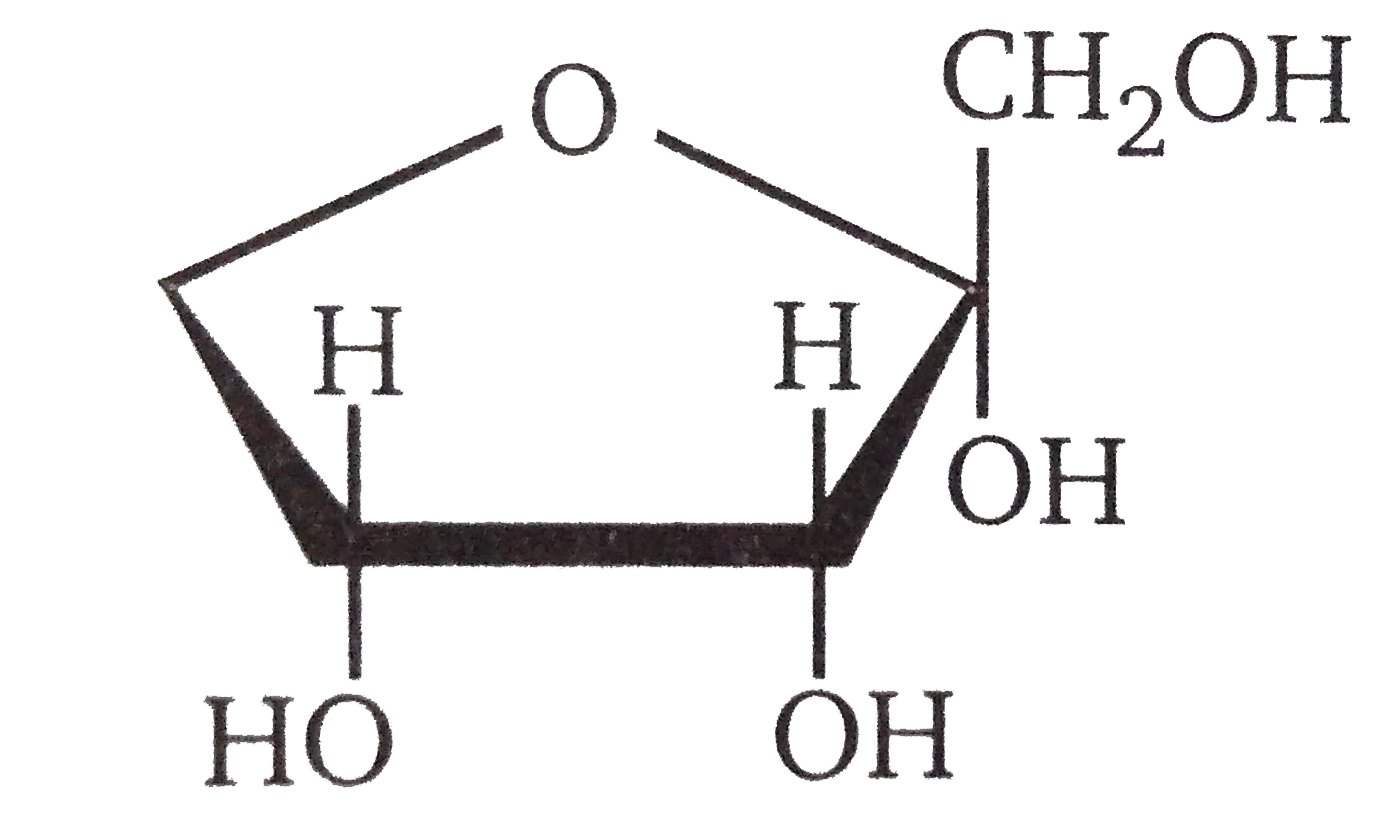
Which set of terms correctly identifies the carbohydrate shown.
1. Pentose
2. Hexose
3. Aldose
4. Ketose
5. Pyranose
6. Furanose
1,3 and 6
1,3 and 5
1,4 and 6
2,3 and 6
The correct Answer is:A
Step by step video, text & image solution for Which set of terms correctly identifies the carbohydrate shown. 1. Pentose 2. Hexose 3. Aldose 4. Ketose 5. Pyranose 6. Furanose by Chemistry experts to help you in doubts & scoring excellent marks in Class 11 exams.
Topper's Solved these Questions
- BOOK - BANSALCHAPTER - GENERAL ORGANIC CHEMISTRYEXERCISE - Exercise 128videos
GENERAL ORGANIC CHEMISTRY
- BOOK - BANSALCHAPTER - GENERAL ORGANIC CHEMISTRYEXERCISE - Exercise 239videos
GENERAL ORGANIC CHEMISTRY
- BOOK - BANSALCHAPTER - ATOMIC STRUCTUREEXERCISE - Exercise.335videos
ATOMIC STRUCTURE
- BOOK - BANSALCHAPTER - HYDROCARBONSEXERCISE - Exercise 312videos
HYDROCARBONS
Similar Questions
In the given structure of the carbonhydrate, which of the following are used while naming it ?
(a) Pentose (b) Hexo (c ) Aldose
(d) Ketose (e ) Pyranose (f) Furano
 View Solution
View Solution(a) What are essential amino acids?
(b) A carbohydrate (C12H22O11) is boiled with dil.H2SO4 in alcoholic solution to form two hexoses with the same chemical formula. Identify the carbohydrate and the two hexoses. Give necessary chemical equations.
(c) What is denaturation of protein?View Solution
Knowledge Check
- Question 1 - Select One
Which set of terms correctly identifies the carbohydrate shown ?

(1) Pentose , (2) Pentulose, (3) Hexulose , (4) Hexose
(5) Aldose, (6) Ketose, (7) Pyranose , (8) FuranoseA2,6,8B2,6,7C1,5,8DA set of terms other than these - Question 2 - Select One
Find true and False from the following statements regarding carbohydrates
S1: All monosaccharides whether aldoses or ketoses are reducing sugars
S2: Bromine water can be used to differentiate between aldoses and ketones
S3:A pair of diasteromeric aldoses which differ only in configuration at C−2are anomers.
S4: Osazone formation destroys the configuration of C−2 of an aldose, but does not affect the configuration of the rest of the molecule.ATTTTBTFTFCTTFTDFTTT - Question 3 - Select One
Which of the given options fits correctly in the blank space to exhibit the similar pattern shown by the three sets below?
4323621007?5Aa. 71Bb. 49Cc. 64Dd. 81
Which of the following is not true about glucose?
(A) It is an aldose
(B) It is present in the furanose form only
(C) It does not give 2,4 DNP test
(D) On heating with HI, it forms n-hexaneView SolutionIdentify terms and factors in the expressions given below:
1.2ab−2.4b+3.6aView SolutionMonosaccharides are polyhydric aldehydes and ketones which cannot be hydrolysed into simpler carbohydrates. The monosaccharides containing −CHO group are called aldoses while those containing C=O group are called ketoses. The aldehyde group is always present at C1 while keto group is generally present at C2. All monosaccharides are oxidised by Tollen's reagent and Fehling solution and are called reducing sugars.
The monosaccharide molecules may be assigned D and L-configurations depending upon whether the configuration of the molecule is related to D- or L-glyceraldehyde. If the −OH group is attached to the carbon adjacent to the −CH2OH group (last chiral carbon) is on the right hand side, it is assigned D-configuration. The molecule is assigned L-configuration if the -OH group attached to the carbon adjacent to the −CH2OH group is on the left. The monosaccharides contain one or more chiral carbon atoms. Pentoses and hexoses have cyclic structures furanose (five membered) and pyranose (six membered). During cyclization, C1 in aldohexoses and C2 in fructose become chiral and the newly formed -OH group may be either on the left or on the right in Fischer projection formulae. These monosaccharides, therefore, exist in two stereoisomeric forms called α-anomer and β-anomer while C1andC2 are called glycosidic or anomeric carbon. The bonds joining glycosidic carbon are called glycosidic linkages. D(+) glucose exists in two stereoisomeric forms, α-D- glucose and β-D-glucose. When either of these two forms of glucose i.e., α−D−glucose are dissolved in water and allowed to stand, these get slowly converted into other form and an equilibrium mixture of both is formed. This process is called mutarotation.
Which of the following pairs give positive Tollen's test?View SolutionMonosaccharides containg an aldehyde group are called aldoses while those containing a keto group are called ketoses. The aldehyde group is usually present at C1 while the keto group is usually present at C2. All monosaccharides containing five ans six carbon atoms have cyclic structures , furanose (five membered) and pyranose (six membered). During ring formation. C1 in aldoses and C2 in ketoses becomes chiral and hence all these monosaccharides exist in two steroismeric forms called the α-anomer and the β-anomer while C1 and C2 are called glycosidic or anomeric carbon atoms. In contrast, steroisomers , which differ in configuration at any other chiral carbon other than the glycosidic carbon are called epimers. Two molecules of the same or different monosaccharides combine together through glycosidic linkage to form dissacharides. All monosaccharides (aldoses and ketoses) and disacchardies expect sucrose reduce Tollens' reagent and Fehling's solution , undergo mutarotation and form osazones.
Which of the following pairs give the same osazone ?View SolutionMonosaccharides are polyhydric aldehydes and ketones which cannot be hydrolysed into simpler carbohydrates. The monosaccharides containing −CHO group are called aldoses while those containing C=O group are called ketoses. The aldehyde group is always present at C1 while keto group is generally present at C2. All monosaccharides are oxidised by Tollen's reagent and Fehling solution and are called reducing sugars.
The monosaccharide molecules may be assigned D and L-configurations depending upon whether the configuration of the molecule is related to D- or L-glyceraldehyde. If the −OH group is attached to the carbon adjacent to the −CH2OH group (last chiral carbon) is on the right hand side, it is assigned D-configuration. The molecule is assigned L-configuration if the -OH group attached to the carbon adjacent to the −CH2OH group is on the left. The monosaccharides contain one or more chiral carbon atoms. Pentoses and hexoses have cyclic structures furanose (five membered) and pyranose (six membered). During cyclization, C1 in aldohexoses and C2 in fructose become chiral and the newly formed -OH group may be either on the left or on the right in Fischer projection formulae. These monosaccharides, therefore, exist in two stereoisomeric forms called α-anomer and β-anomer while C1andC2 are called glycosidic or anomeric carbon. The bonds joining glycosidic carbon are called glycosidic linkages. D(+) glucose exists in two stereoisomeric forms, α-D- glucose and β-D-glucose. When either of these two forms of glucose i.e., α−D−glucose are dissolved in water and allowed to stand, these get slowly converted into other form and an equilibrium mixture of both is formed. This process is called mutarotation.
Two forms of D-glucopyranose are calledView Solution

